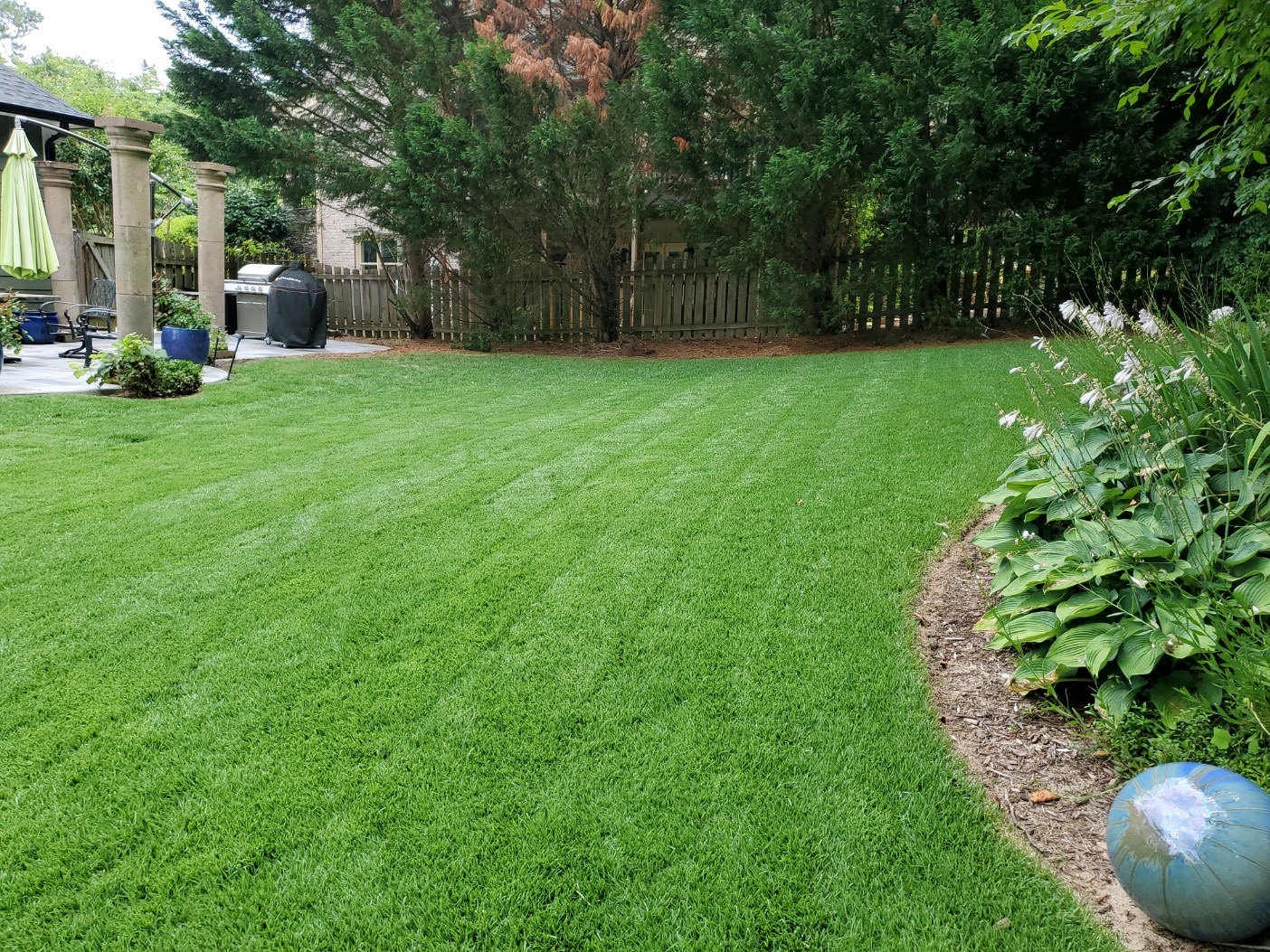Healthy, beautiful turf can be the difference between a good landscape and a great landscape. The use of sod in landscapes provides opportunities for quick and efficient use of desirable, hybridized grasses that can be difficult to establish otherwise.
A beautiful lawn can be achieved relatively quickly if your sod is prepared, planted, and maintained well. Many factors, including sod certification, should be considered, whether planting around newly built properties or renovating an existing space.
Sod Verification: Certified vs. Non-Certified
Light amount, water delivery, primary use, and maintenance frequency are a few important factors to consider when choosing sod. For example, a shaded, mature landscape will favor certain species and varieties over others. However, an often-overlooked factor to consider is if you want certified sod or non-certified sod.
Certified sod is verified turf, clean of noxious weeds, consistent quality, and a single turf variety. (Please note that this certification comes from the Georgia Crop Improvement Association.) Since there aren’t laws regulating turf quality, the only assurance for sod is the Turfgrass Certificate provided by the GCIA. Growers, like NG Turf, producing certified sod must comply with rigorous standards set for sourcing, cultivating, and maintaining the crop. Non-certified sod makes no guarantee of cleanliness, quality, or consistency.
Inspections occur three times a year to guarantee the cleanliness and consistency asserted by certification. Each delivery of certified sod should be accompanied by a tag that identifies it as such. However, this shouldn’t be confused with a Live Plant Certificate from the Georgia Department of Agriculture. This simply certifies it’s free of pests but doesn’t guarantee quality.
Concerns relieved by choosing GCIA certified sod instead of uncertified sod go further than you may expect. The absence of weeds is an objective, visible trait, able to be easily observed. While consistency in quality and variety is harder to see at the install time, it is more important as time progresses. Non-certified sod may include many varieties or mutations, appearing blotchy, and may even respond differently to inputs and environmental conditions, magnifying dissimilarity.
A clean slate for weeds is great and gives our team a head start for cleanliness long-term. If the sod includes many varieties or mutations, it will potentially appear blotchy and may even respond differently to inputs and environmental conditions, magnifying the dissimilarity.
Our Recommendation: Choose Certified Sod
Many factors should be considered when choosing sod. While location, water availability, and use are fundamental, sod certification should also be analyzed. Unlike certified sod, non-certified sod isn’t regulated and is not required to maintain any standard. Therefore, Nature’s Turf recommends growing certified sod in your lawn.
For more information on choosing sod or sod certification, reach out to our team today.








